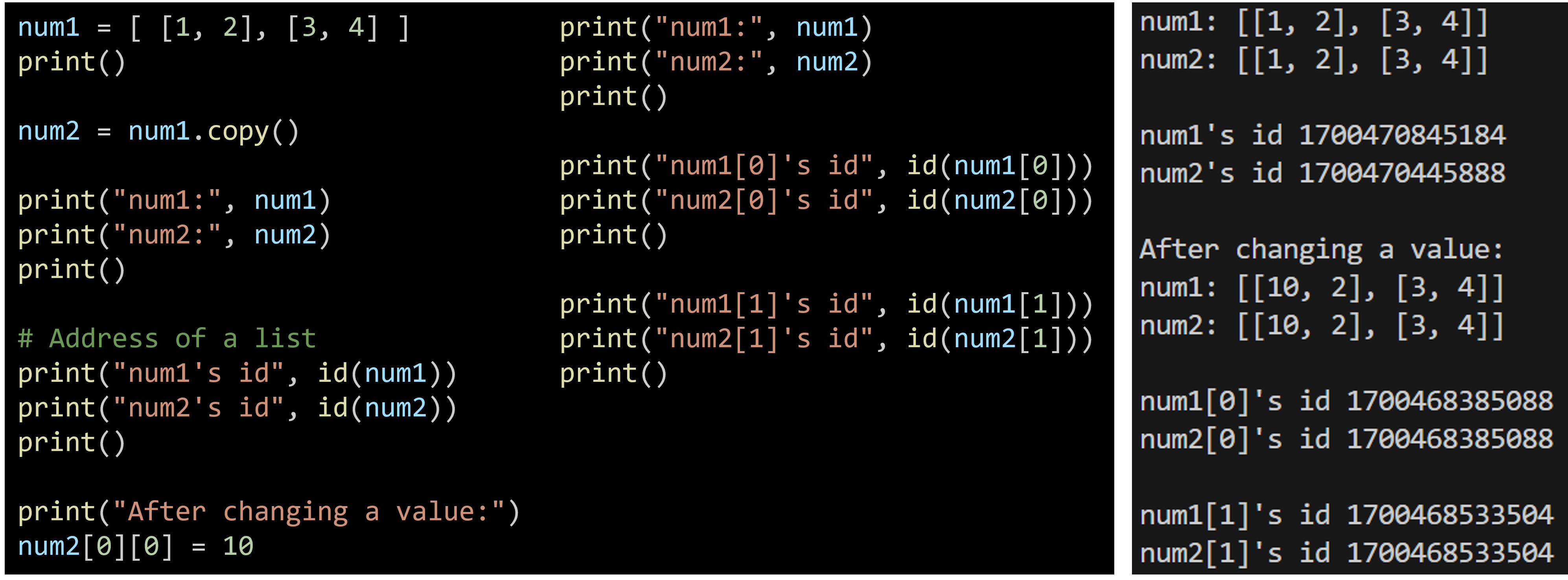Object ID
- The id() function returns a unique id for the specified object
- All objects in Python has its own unique id
- The id is assigned to the object when it is created
- The id is the object's memory address and will be different for each time you run the program
- Except for some object that has a constant unique id, like integers from -5 to 256, frequently used, saving memory and improving performance
Copy List
Example:

Output:

Explanation:
- num2 = num1 does not make a new copy of the list.
- Any change to the list via num1 or num2 will reflect in both because they share the same list object.

Example: Shallow Copy

Explanation:
- copy() or slicing ([:]) makes a shallow copy: only the outer list is copied.
- Inner elements (like nested lists) are still shared.
Example: Deep Copy

Explanation:
- num2 is a completely separate object.
- All inner lists are also copied — no shared references remain between num1 and num2.